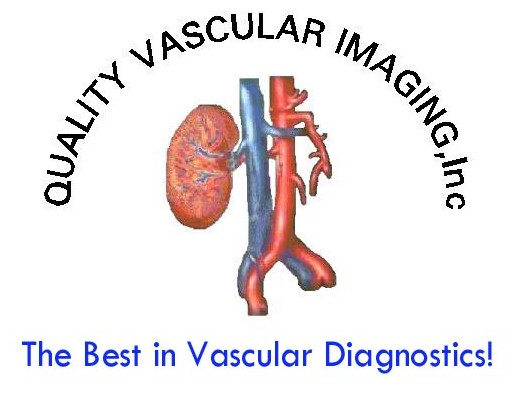

Aortic Aneurysm What is an Aneurysm? An aneurysm is an abnormal ballooning of an artery wall to 1 ½ times the normal diameter. This most commonly occurs in the abdominal aorta, the largest vessel in the body, which carries blood from the heart to all the abdominal organs as well as the legs. Abdominal aortic aneurysm (AAA) affects between 3 and 9% of the population being much more prevalent in males and especially if you have a close relative who had a AAA. It is estimated that 1.5 million Americans have a AAA but only about 50% of those have been diagnosed.
Normal aorta Dangerous ballooning of the artery Ruptured aortic aneurysms are the 16th largest cause of death in the U.S. today. According to the Mayo Clinic, more than 15,000 Americans die every year, more than those from AIDS and many forms of cancer. Even more incredible, it is widely believed that the death toll from aortic aneurysms is actually much higher as many of the 450,000 sudden deaths in the U.S. each year are typically assumed to be cardiac arrest when in fact, aneurysms are quite possibly the reason. Ruptured aortic aneurysms are lethal, killing more than half of all victims, often before they reach the hospital. They eventually bulge and then burst, causing severe internal bleeding. Those who make it to the hospital and undergo emergency surgery have only a 50 percent survivability rate. If this is such a large problem, why isn’t routine testing performed? Aortic aneurysms develop slowly and are often asymptomatic, leaving the problem largely undetected and untreated. Few doctors routinely inquire about aneurysm histories in patients, making this one of the most neglected diseases. Aneurysms occasionally cause pain or discomfort by the pressure put on surrounding structures (like back pain if it irritates the nearby backbone) or small blood clots from inside lining of the aneurysm may break off and block the circulation to the legs or feet. Unfortunately, most aneurysms cause NO SYMPTOMS until they rupture. Rupture results in massive internal bleeding usually causing severe pain with shock and loss of consciousness. Unfortunately, the majority of people with AAA rupture will die so it is important to know if AAA is present. An AAA is usually discovered on physical exam by the physician, or during an x-ray examination done for other reasons. If you or your physician are worried that you might have an AAA, an ultrasound can easily detect this problem. We know that aneurysms below a certain size are unlikely to rupture so if an aneurysm is discovered, regular follow-up is required to determine if the aneurysm is enlarging.
Fig. 1 A duplex ultrasound of a noraml aorta - note the smooth uniform walls Fig. 2 Note the variable dimensions of this aorta - called "aortic ectasia". While not quite large enough to be classified as an aneurysm, this should be watched with regular duplex scanning.
Figure 3 Figure 4 Figure 3 A small saccular aneurysm of the abdominal aorta Figure 4 A large abdominal aortic aneurysm that would be considered for intervention
Aortic aneurysms can be successfully treated - If identified early enough! Aneurysms have been studied for many years so we know a good deal about them. For instance, aneurysms below 5 centimeters are very unlikely to rupture. So aneurysms less than this need regular follow-up with duplex ultrasound every 6 - 12 months to check for enlargement. For aneurysms larger than 5 centimeters, repair is usually recommended unless the person has other conditions that would make the procedure more risky, such as bad heart disease for example. Repair is traditionally done surgically through an incision in the abdomen. A synthetic graft is sewn in above and below the aneurysm, excluding it. This procedure has been performed for over 40 year and is highly successful. More recently, endovascular repair is being performed. In this operation, a synthetic graft is the graft is inserted inside the aneurysm through a small incision in the groin. Special stents hook the graft in place above and below the aneurysm, effectively excluding it. This procedure does carry its own set of risks and complications and can not be performed in all patients but is an exciting development in the treatment of this life threatening disease. Screening can save lives! Due to insurance regulations, physicians generally cannot order tests unless there are specific signs and symptoms of disease - a problem for detection of aortic aneurysm and much peripheral vascular disease. However, according to a study published in The Lancet, a British medical journal in November 2002, thousands of the elderly individuals with abdominal aortic aneurysms could be saved each year with regular screening programs. Today, most aortic aneurysms can be detected with a simple, painless and effective ultrasound-screening test. Find out today if you have the “silent killer!” These tests can be performed at the request of the patient and do not require a physician order! Simply contact us for an appointment. Click here for mor information of QVI's Screenings
|
QVI Home Virtual Vein Center Why QVI really is the Best in Vascular Ultrasound! Case of the Month Patients Referring Physicians Health Professionals Site Map |
Current Happenings

Introducing our new educational website.

Virtual Vein Center is a new concept in educational delivery. Get the education you need and want, when you need it. If you need CME, you can get them here as well.
To read more about it, click here for a complete page. Feel free to go to the site and browse around.


Several QVI staff took time to attend the 2014 American College of Phlebology Annual Congress in Phoenix Arizona in November to deliver numerous workshops and lectures. It was a high quality meeting as usual. The complete program is available for download here.


The 2014 SVU Annual Conference was held in Orlando and several QVI attended and presented numerous presentations. Jeannie was also honored as a Fellow of the SVU.
To read more

Jeannie recently attended the 25th Society of Vascular Medicine 2014 Annual Conference as an invited speaker in La Jolla, Ca. Her numerous lectures were very well received.


The International Union of Phlebology, in conjunction with the American College of Phlebology held its World Meeting in Boston in September 2013. Held only every 4 years, this was the first time ever in the US. Several QVI staff were invited speakers presenting some original scientific research.

Sydney, Australia

Bill was the International Keynote Speaker at the Australian Sonographer Association Annual National Conference in Sydney.
What a great experience!
To read more about this and our other international teaching


QVI was once again awarded the D.E. Strandness Award for Scientific Excellence at the 2013 SVU Annual Conference.
To read more -

Medical Compression socks continue to be on the forefront of venous treatment. Recently, they have entered the realm of the athlete. To learn more about what compression socks can do you you, please visit compressionsocks.pro


QVI wins the D.E Strandness Award at the 2012 SVU Annual Conference!
Read more about it!

To go to the
CASE OF THE MONTH!
Click the QVI logo




